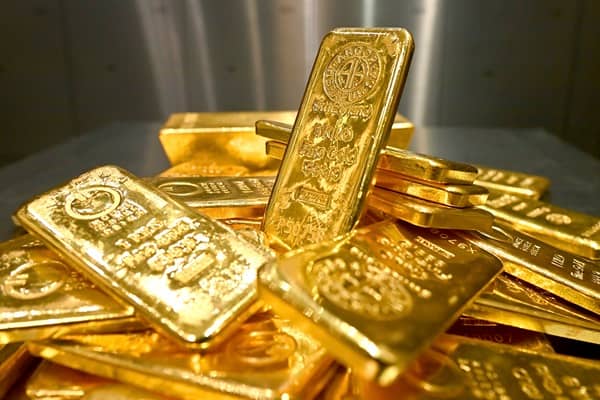Gold prices reached a new all-time high on February 24, 2025, surpassing the previous record set just a week earlier.
This milestone reflects the growing global demand for safe-haven assets, driven by economic uncertainty from recent trade tensions. Fears of potential tariffs announced by President Donald Trump have heightened concerns in financial markets, prompting investors to seek security.
This environment has boosted investments in the SPDR Gold Trust, the world’s largest gold-backed fund, which hit its highest since August 2023 at 904.38 tons.
Gold prices surged to the $2,956.00 per ounce range, setting an unprecedented record. Simultaneously, the U.S. dollar weakened to its lowest level since December 2024, increasing the precious metal’s appeal to international buyers.
Gold becomes more affordable in other currencies when the dollar’s value decreases, increasing global demand.
This phenomenon has become a key factor in the recent price rally.
The fear of new tariffs has fueled inflation expectations and the potential for large-scale trade conflicts.
Tariffs can raise the costs of imported goods, potentially triggering widespread increases in consumer prices. In this context, gold is seen as an effective hedge against inflation, attracting investors looking to protect their capital during times of uncertainty. Market volatility also boosts demand for this asset, which is considered a haven during geopolitical and economic tension.
So far in 2025, gold prices have risen by more than 12.50%, reflecting investors’ growing interest in this asset. The possibility of gold reaching $3,000.00 per ounce has become a significant topic of discussion among investors. This sustained growth is driven by geopolitical factors and global macroeconomic conditions influencing investment decisions.
This week, financial markets are focused on a series of key U.S. macroeconomic data releases. The most relevant indicators are consumer confidence, home sales, Gross Domestic Product (GDP), and the consumer spending index. These data points are essential for assessing the country’s economic health and could directly influence the Federal Reserve’s (FED) interest rate decisions.
The FED’s monetary policy plays a crucial role in the behavior of the gold market. An increase in interest rates tends to strengthen the dollar and reduce gold’s appeal as interest-bearing assets become more profitable in comparison. Conversely, a low-interest-rate policy boosts gold demand as investors seek safer alternatives in the face of a weak dollar.
Beyond economic factors, geopolitical tensions and political decisions will continue to be key elements in the evolution of gold prices. As new developments unfold internationally, gold demand will likely fluctuate, reflecting investors’ risk perception in an increasingly complex global environment.
In conclusion, the recent all-time high in gold prices reflects global economic uncertainty and growing demand for safe-haven assets. The combination of trade tensions, inflation expectations, and dollar value fluctuations has pushed the precious metal’s price to record levels. As markets remain attentive to macroeconomic data and FED decisions, gold’s future could be marked by a new growth phase. The possibility of reaching $3,000.00 per ounce is feasible and represents a likely scenario if current conditions persist.

